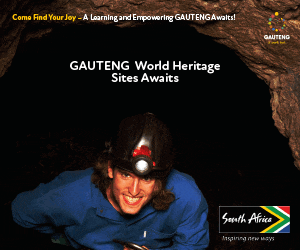The Cradle of Humankind: Explore This UNESCO Site

The Cradle Of Humankind: Why This UNESCO Site is a Must-Visit
Just 50km northwest of Johannesburg lies a remarkable window into our collective past — the Cradle of Humankind. Designated a UNESCO World Heritage Site in 1999, this ancient and scientifically significant area is one of only eight such sites in South Africa. Rich with fossil discoveries, subterranean limestone caves, and sweeping landscapes, the Cradle of Humankind offers visitors a unique chance to explore the very roots of human evolution.

ALSO READ: Exploring Gauteng: Top 5 Must-Visit Attractions for 2025
A Journey Back in Time
The Cradle of Humankind is globally renowned for its fossil record, which has profoundly shaped the understanding of human origins. Spanning millions of years, the area has produced some of the most important hominid fossils ever discovered, many of which support the ‘Out of Africa’ theory — the idea that all modern humans originated in Africa before spreading to the rest of the world.
One of the most famous sites within the Cradle is the Sterkfontein Caves, where over 500 hominid fossils have been unearthed. Among them is the iconic skull known as Mrs Ples, discovered in 1947 by Professor Robert Broom and John Robinson. Dating back more than 2 million years, this skull belonged to Australopithecus Africanus, one of our earliest upright-walking ancestors.
Equally significant is Little Foot, an almost complete skeleton of a hominid discovered in 1997, which continues to provide critical insights into early human anatomy and behavior. These groundbreaking discoveries not only placed the Cradle of Humankind on the world map but also strengthened the case for Africa as the cradle of all humankind.
Fossil Sites Worth Exploring At The Cradle Of Humankind
Beyond Sterkfontein, the Cradle of Humankind includes 13 fossil-rich sites. Among them are Swartkrans, Kromdraai, and Makapan in Limpopo, as well as Taung in the North West Province. Each site adds a piece to the complex puzzle of human evolution, showcasing life from 2 to 3 million years ago.
The landscape itself is a stark contrast to nearby urban centers — featuring undulating grasslands, rocky outcrops, and gentle river valleys that preserve the natural charm of South Africa’s interior before the arrival of modern development.
Discovering the Cradle of Humankind Today
For those keen on uncovering ancient mysteries, the Maropeng Visitor Centre is the perfect place to start. This large, interactive museum offers a self-guided tour through time, complete with multimedia exhibits, fossils, and hands-on displays that bring human evolution to life. Just a short drive away, the Sterkfontein Caves offer guided hourly tours, taking you deep into the limestone network where history literally lies beneath your feet.
But the Cradle isn’t just for history buffs. It’s also a popular destination for outdoor enthusiasts and day-trippers. The region features horse trails, mountain biking routes, hot-air balloon rides, and excellent dining options — all set against the picturesque backdrop of the Magaliesberg mountains.
For a longer stay, the Maropeng Hotel provides a cozy and convenient base to explore the surrounding area. And if you’re hungry after a day of discovery, the Tumulus Restaurant at Maropeng serves up delicious meals with sweeping views of the countryside.
Travel Tips for Your Visit
- Best Time to Visit: The Cradle of Humankind is open year-round, with mild winters and warm summers.
- What to Pack: Bring comfortable walking shoes, sunscreen, and a hat, especially if you plan on outdoor activities.
- How to Get There: The site is accessible off the R563. It’s best to download directions from the Maropeng website.
- Contact Information:
Maropeng Visitor Centre
Tel: +27 (0)14 577 9000
Email: [email protected]
Why You Should Go To The Cradle of Humankind
Visiting the Cradle of Humankind is more than just a history lesson — it’s a powerful reminder of where we come from. Standing in the caves where our ancestors once walked, surrounded by fossils that reshaped science, visitors often leave with a deeper appreciation of our shared heritage.
Whether you’re a curious traveler, a science enthusiast, or just looking for a scenic escape from the city, the Cradle of Humankind is a must-visit destination in South Africa — one that connects past and present in the most profound way.
Explore your roots. Walk in the footsteps of the first humans. Discover the Cradle of Humankind.



